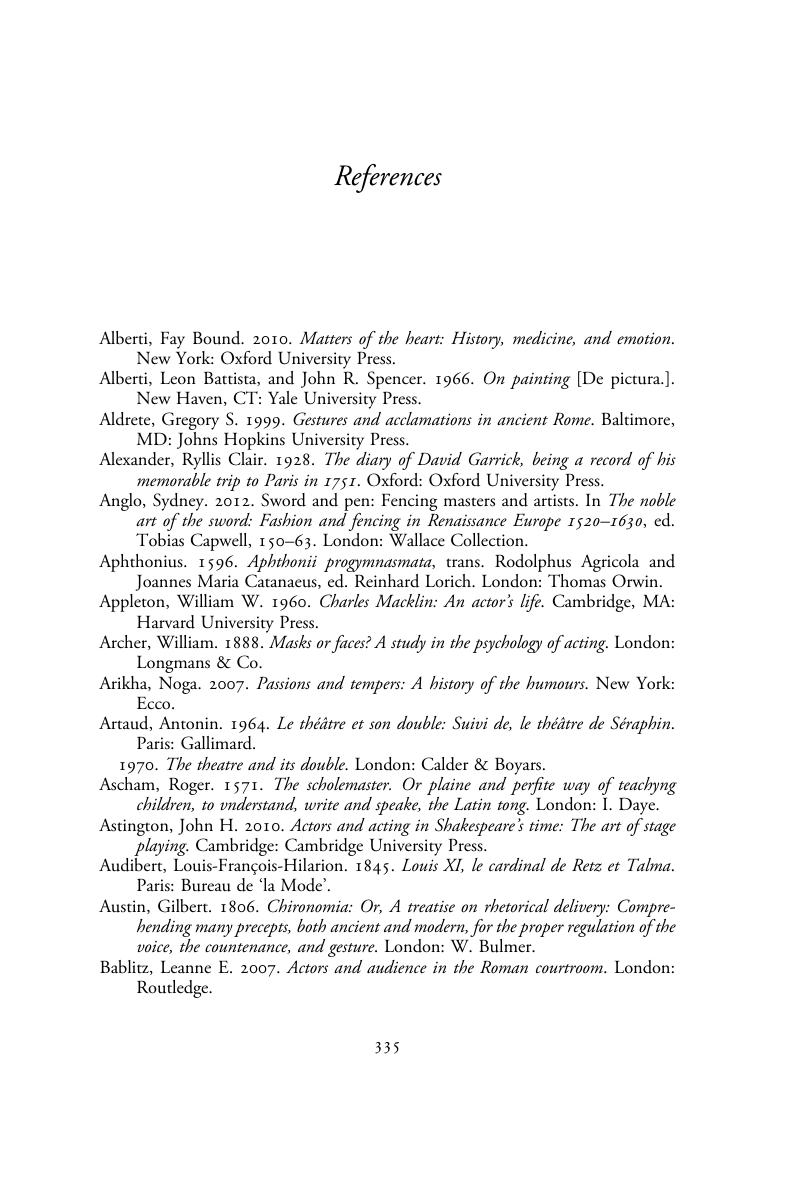 The Players' Advice to Hamlet
The Players' Advice to Hamlet Book contents
- The Players’ Advice to Hamlet
- The Players’ Advice to Hamlet
- Copyright page
- Contents
- Illustrations
- Acknowledgements
- Introduction
- Chapter 1 Hamlet’s Advice to the Players
- Chapter 2 Rhetorical Performance in Antiquity
- Chapter 3 Acting, Preaching and Oratory in the Sixteenth Century
- Chapter 4 Baroque Acting
- Chapter 5 Actors and Intellectuals in the Enlightenment Era
- Chapter 6 Emotion
- Chapter 7 Declamation
- Chapter 8 Gesture
- Chapter 9 Training
- References
- Index
- References
References
Published online by Cambridge University Press: 16 January 2020
- The Players’ Advice to Hamlet
- The Players’ Advice to Hamlet
- Copyright page
- Contents
- Illustrations
- Acknowledgements
- Introduction
- Chapter 1 Hamlet’s Advice to the Players
- Chapter 2 Rhetorical Performance in Antiquity
- Chapter 3 Acting, Preaching and Oratory in the Sixteenth Century
- Chapter 4 Baroque Acting
- Chapter 5 Actors and Intellectuals in the Enlightenment Era
- Chapter 6 Emotion
- Chapter 7 Declamation
- Chapter 8 Gesture
- Chapter 9 Training
- References
- Index
- References
Summary

Information
- Type
- Chapter
- Information
- The Players' Advice to HamletThe Rhetorical Acting Method from the Renaissance to the Enlightenment, pp. 335 - 362Publisher: Cambridge University PressPrint publication year: 2020